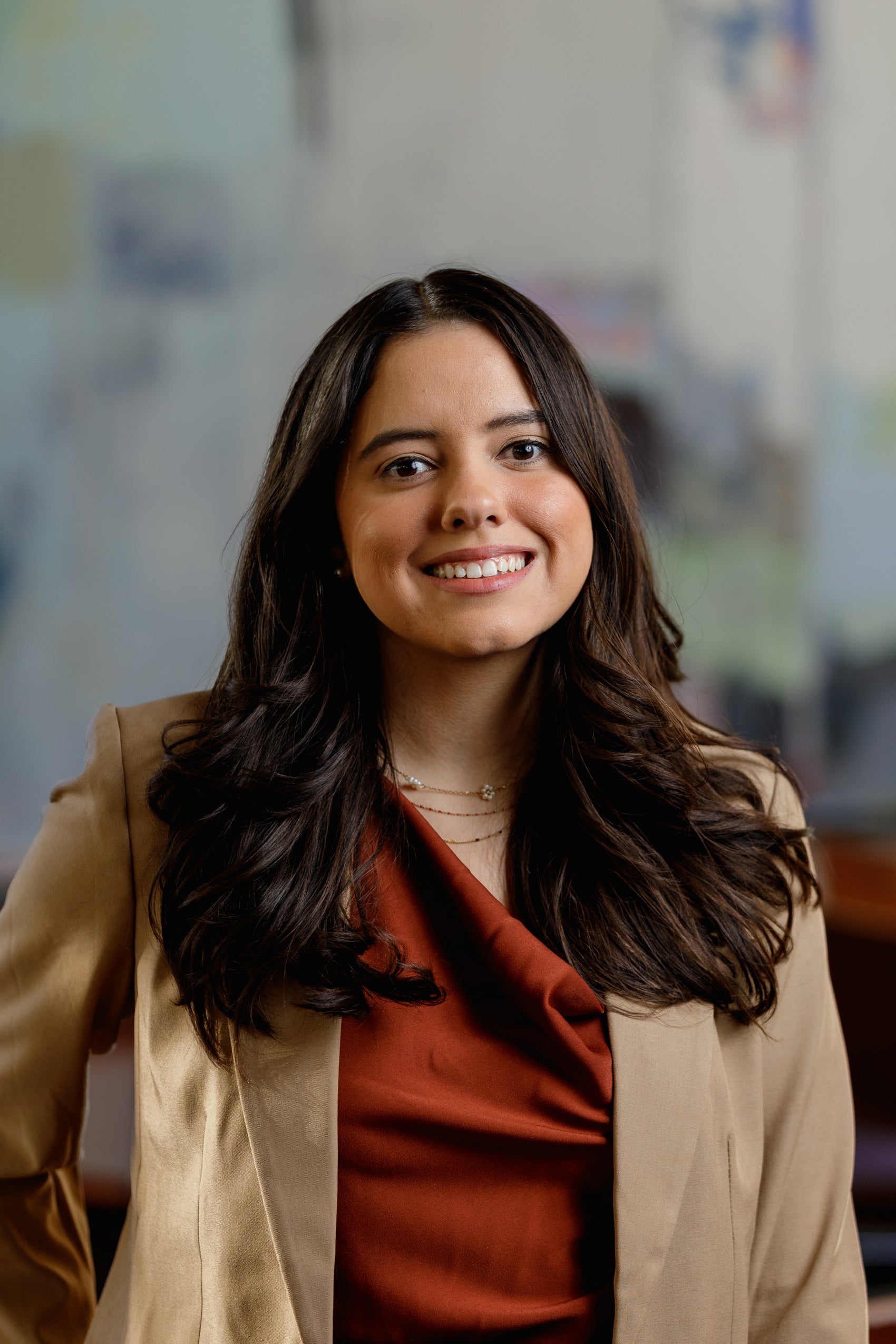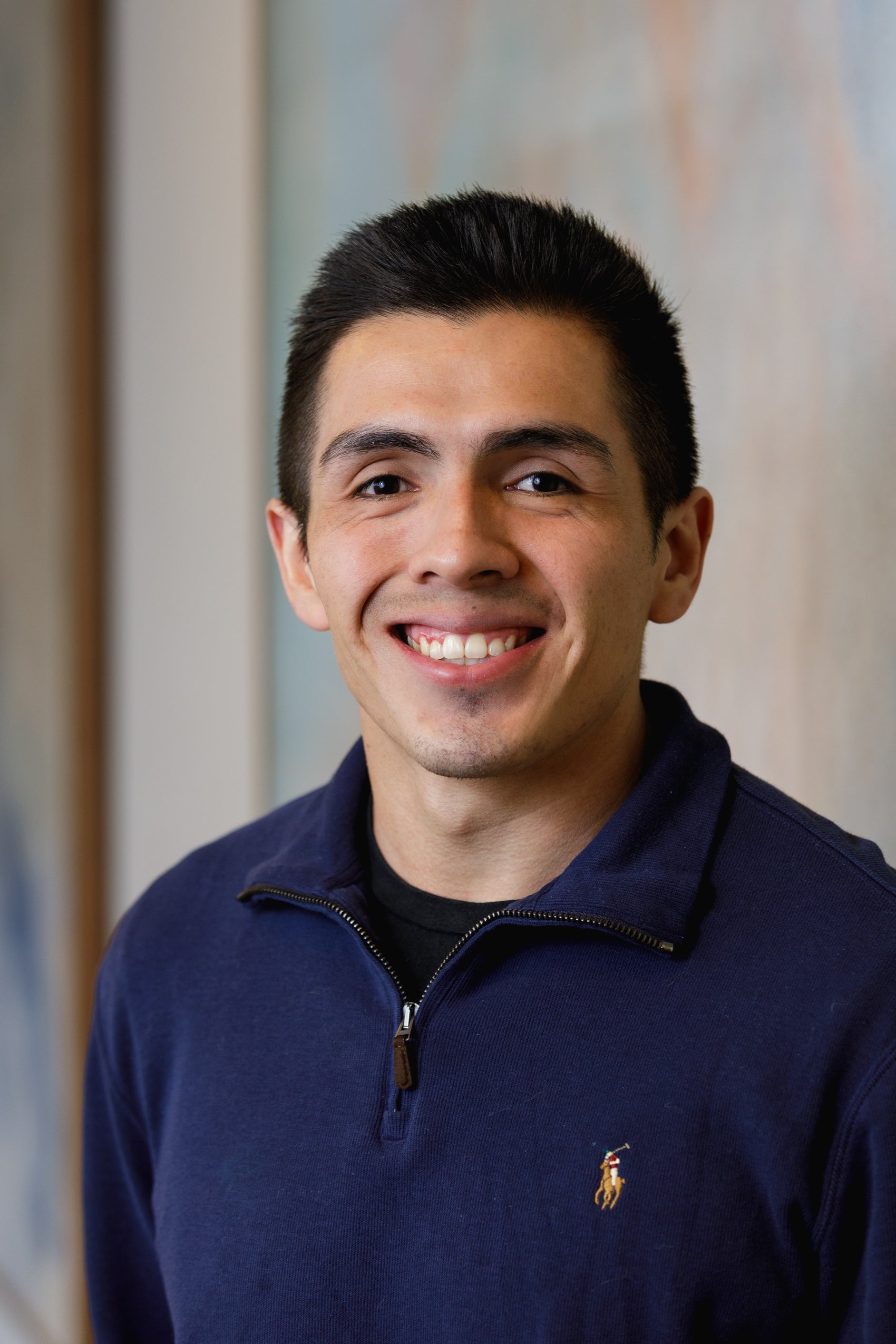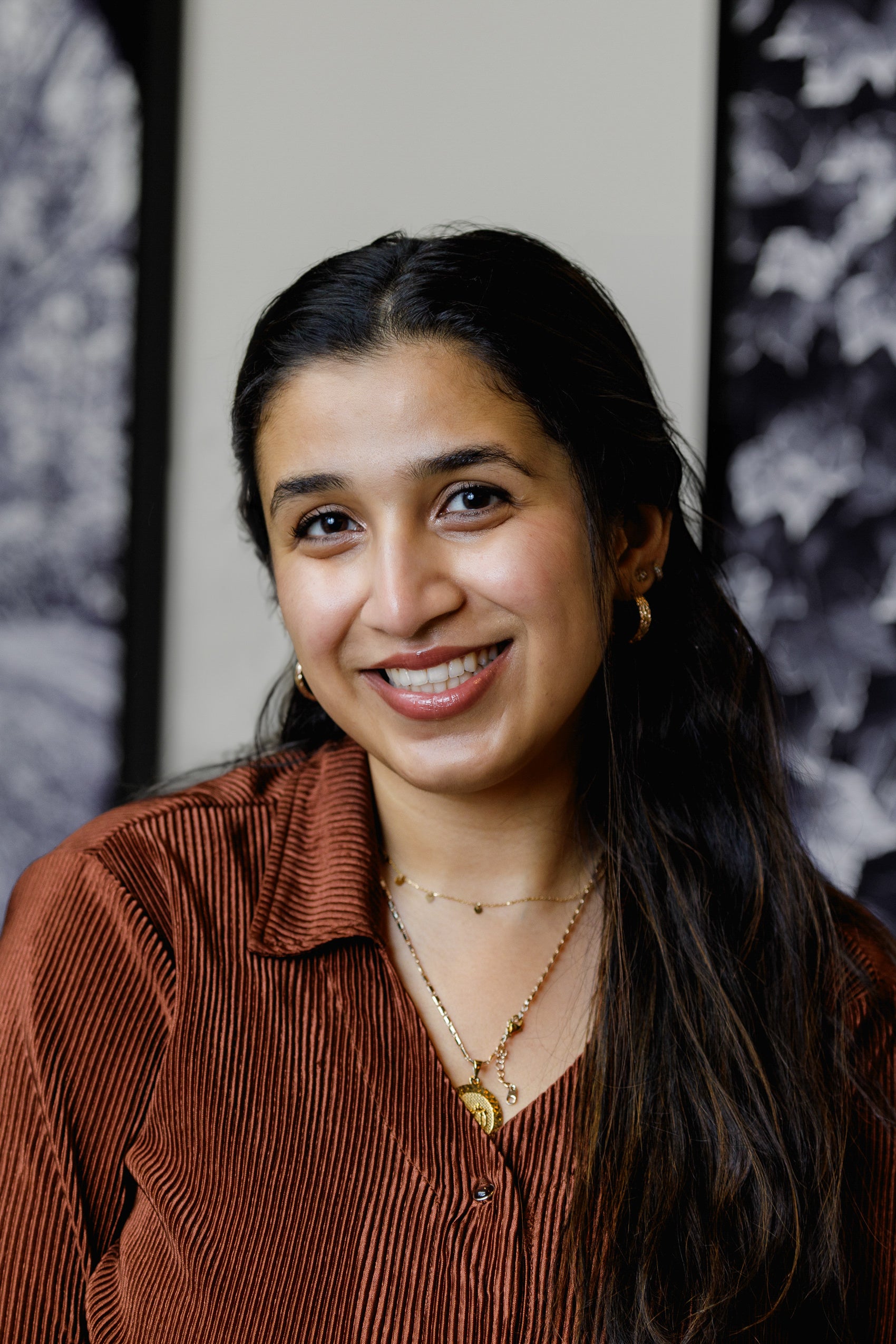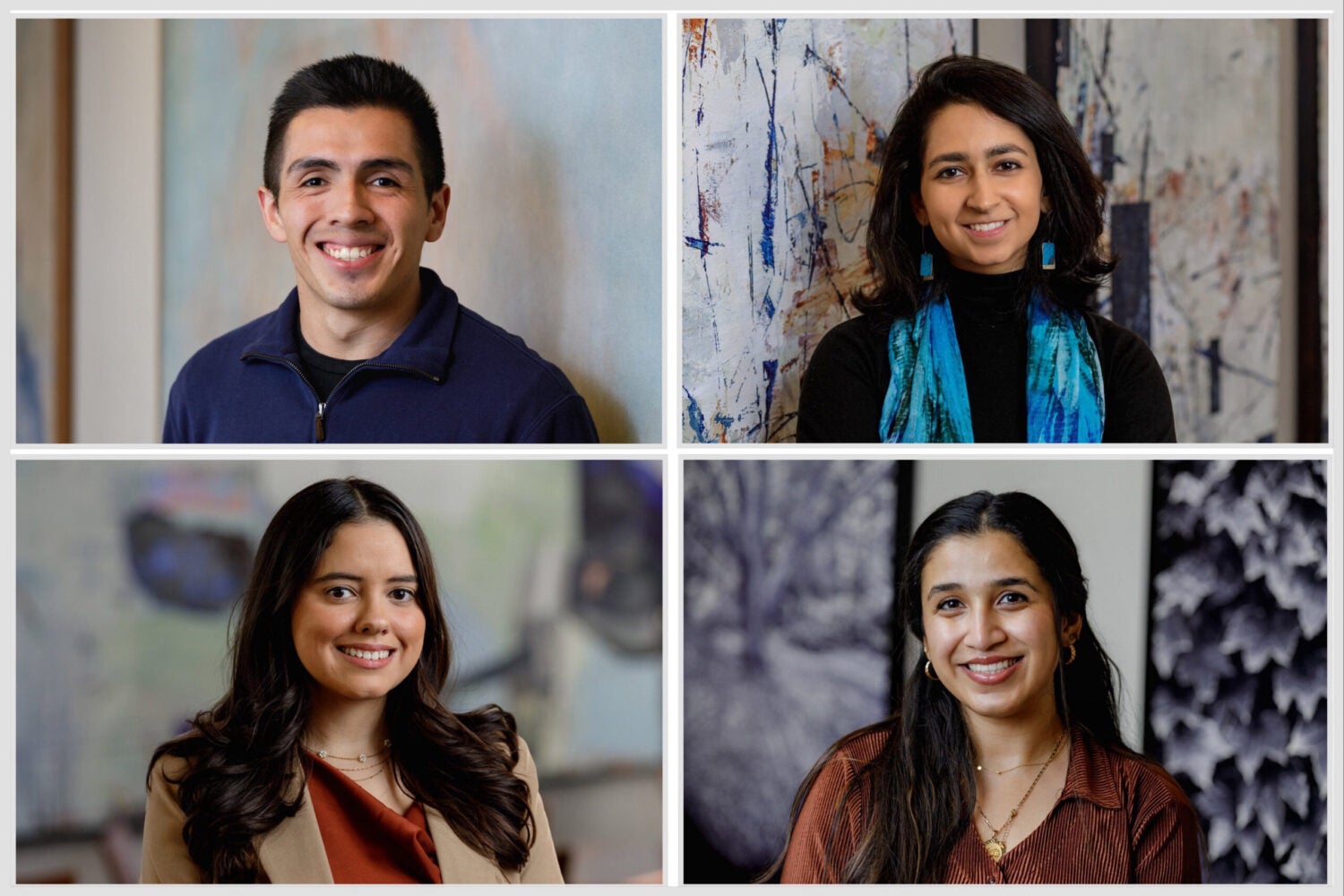Harvard Law School’s Winter Term is only three weeks long, but every year a significant number of upper-level J.D. students and LL.M. candidates find it long enough to immerse themselves in international, comparative, or foreign law by spending this time abroad. This year, 11 of these students were selected as Cravath International Fellows. They conducted independent research or clinical projects in nine countries and, even when the Fellows traveled to the same country, each explored distinct legal questions and challenges and gained unique insights. Here are four of their stories.
Adriana Bones Ortega ’24

Adriana Bones Ortega spent Winter Term in Mexico City, conducting an independent clinical at the Miguel Agustín Pro Juárez Human Rights Center A.C. (Center Prodh), an NGO focused on democratic and territorial justice.
She contributed to a brief that the organization will submit to the Inter-American Commission on Human Rights, on behalf of an incarcerated client, claiming that he was wrongfully convicted and received inadequate health care in prison. In its admissibility report, issued 10 years after the case was first submitted, the Commission, which is the entry point for cases heard by the Inter-American Court of Human Rights, invoked the right to health, enshrined in Article 26 of the American Convention on Human Rights. “In actions like this, I think the Inter-American system is very advanced for its time,” Bones Ortega observes. “Admissibility was one of the hardest burdens; now we had to gather new evidence about the plaintiff’s experiences during COVID.”
She conducted extensive legal research on the right to health, on how other countries handled the pandemic, and on access to health care for people deprived of liberty. Her work encompassed general principles as well as case-specific details; she conducted analysis of protections under international law and also “evaluated the client’s medical records, creating a compendium categorizing relevant information useful for his defense.” Reflecting on the case, Bones Ortega said: “Despite the lengthy process, I am still optimistic that the Commission will rule in our client’s favor, considering the robustness of our legal arguments and the compelling evidence we’ve gathered regarding human rights violations.”
Center Prodh also represents the families of victims of forced disappearances in Mexico. (A forced disappearance is generally defined as an act depriving a person of their freedom, perpetrated by state actors or with their support or acquiescence, without providing information or acknowledging the deprivation of freedom.) At HLS, as a student in the International Human Rights Clinic, Bones Ortega had collaborated with Clinical Professor of Law Susan Farbstein on a project identifying the unique evidentiary challenges that confront those seeking redress for forced disappearances, and worked with a client whose family members disappeared in 2017. During her Winter Term clinical, Bones Ortega built on this experience and strengthened her legal Spanish as she actively engaged in Center Prodh meetings to discuss strategy for various cases. Among other assignments, she was part of the team that prepared for a press conference about the Ayotzinapa case, in which 43 young men disappeared in 2014 from the rural teacher training college at which they were studying. Independent investigators have implicated Mexican security forces in the disappearance, but to date the remains of only three of the students have been formally identified. “How do you go to the government and ask for justice or accountability when they are the perpetrators?” she asks. “I was able to experience first-hand how strategic advocacy and creative grassroots efforts take place.”
Jesus Carreon ’25

Jesus Carreon also spent Winter Term in Mexico City, though his independent clinical with Instituto para las Mujeres en la Migración (IMUMI) addressed a different — but equally compelling — set of issues. The NGO facilitates the safe migration of women to the United States and assists in the reunification of transnational families. After college, Carreon worked at a family law NGO, where he conducted intakes for victims of domestic violence, and as an immigration paralegal at a law firm, where he evaluated clients’ eligibility for naturalization and helped victims of crime complete U-Visa and VAWA applications. At HLS, he has participated in the Harvard Immigration and Refugee Clinic and serves as president of the Harvard Immigration Project, a student practice organization.
These roles, he explains, taught him the importance of conducting trauma-sensitive interviews, and helped him understand how to tailor services for victims of domestic violence. But his interest in the complexities that individuals and families encounter in navigating the U.S. immigration system also resonates on a personal level: Carreon, who moved to the United States from Mexico when he was seven, is a DACA recipient. “There are attorneys who are working zealously to preserve DACA. These advocates make it possible for me to have the life I have today, and I hope one day my work will have the same impact on someone else. That keeps me inspired.”
At IMUMI, Carreon took concrete steps to assist Mexican nationals who otherwise could not have navigated the administrative systems. For example, he sought evidence and prepared a U-Visa petition for a woman who had been deported from the U.S., bolstering her claim that she should be allowed to return. He also completed work permit applications for survivors of the Juarez detention center fire, and provided training to asylum seekers in camps, helping them to use the CBP One mobile application and avoid mistakes that could scuttle the process.
He also encountered a problem that was new to him. A growing number of families with U.S.-born children decide to voluntarily return to Mexico, or they are deported, and they take their children with them. But once they return to Mexico, these children are not afforded access to education or other benefits. To rectify this, parents can arrange dual citizenship for their children by inscribing their U.S. birth certificates into the Mexican registry, but “it’s extremely complex for someone in Mexico to do this. Many U.S. agencies will not ship documents abroad, so the family needs to have a U.S. address. The peso conversion is another problem, because now a lot of families cannot afford the fees. Even making a phone call across the border is difficult for someone who does not speak the language,” Carreon remarks. His work with IMUMI involved such tasks as completing U.S. passport applications for identification purposes relevant to the inscription process. “The process seems so basic, but it is so fundamental for how they will live in Mexico.”
Roshni Chakraborty ’25

During her Winter Term in India, Roshni Chakraborty explored a topic that was quite distinct from Carreon’s work in Mexico, but she was equally engaged in her work. She conducted independent research for an academic paper on “continuing mandamus,” an unusual procedural innovation used by the Supreme Court of India in public interest litigation. The writ allows the Court to issue relief through interim directives before rendering a final judgment. In one notable case, Hussainara Khatoon v. State of Bihar, where pre-trial detainees brought a habeas corpus claim, the Court issued orders directing their release and requiring reform of the statewide bail policy, while delaying its final verdict for more than 15 years.
The Supreme Court of India, she observes, is “well-known for being quite proactive and progressive in public litigation cases. The bar for standing, for example, is much lower than in most other places in the world.” Continuing mandamus is “significantly different from practices in other countries, such as a preliminary injunction, which is predicated on a showing that the plaintiff is likely to succeed on the merits. Here, there seems to be a prima facie establishment of a right, and a determination that the right has been violated, even before the case is conclusively decided on its merits.” After they issue interim orders, the Court also monitors compliance. “It’s very active oversight; I think that’s what makes it unique.”
Prior to law school she worked at an NGO focused on child protection that filed some successful public claims, but she didn’t fully appreciate their significance until she studied impact litigation at HLS. “Over Winter Term I examined my work from a legal theory perspective. On the first day of torts, we’re taught that where there’s a right there’s a remedy, but here the Court seems to be providing remedies without securing the corresponding right.” Through her research, she wanted to address several questions: is continuing mandamus constitutional? Does it constitute judicial overreach? Is it effective?
There is very little scholarship on continuing mandamus, she notes, with scholars in India often concluding that the Supreme Court is overstepping its boundaries. But “India’s constitution has been relatively vague about the Supreme Court’s ability to take on cases, and what oversight mechanisms the judiciary can enact in case the executive is not acting,” she comments. “It’s clear what happens after the verdict is issued, but judges have interpreted Article 142 of the Constitution as giving them a broad grant of discretion while the case is being heard.”
By traveling to India, Chakraborty was able to review cases in the Supreme Court archives, reading the oral arguments, relief orders and judgments. Another interesting part, she says, was conducting interviews with people involved in public interest litigation, from staff at NGOs to senior advocates practicing before the Supreme Court, asking if they thought the approach was effective.
“Supreme Court judgments are often not realized because of executive recalcitrance or lethargy. I think continuing mandamus is an effective, and perhaps necessary, way to secure rights in India,” she concludes.
Irene Ameena ’25

Irene Ameena also returned to a place she’d been before in order to undertake a novel Winter Term project. She was born in Kerala, a state on India’s southern coast, and often visits family members there. “It’s a very progressive state. Muslims, Christians and Hindus have lived together there with a lot of tolerance, and its historically Communist government has provided strong social support systems, but there are cultural barriers to using them,” she observes. “I wanted to see what it was like to be a lawyer in that landscape.” She drew on her interest in working with people who have been impacted by violence, and in exploring ways of providing holistic justice and accountability away from the carceral system.
During Winter Term, Ameena conducted an independent clinical with the Center for Constitutional Rights, Research and Advocacy (CCRRA) in Kerala, after learning about the NGO from a current HLS S.J.D. candidate who had done an internship there. The first project she worked on was a report, to be presented to judges in Kerala’s courts, on how to expand the scope of damages in civil suits brought by domestic violence survivors. “There is restitution — on what you tangibly lose — but the Center wanted to look beyond that and really capture the harms that result from domestic violence.”
Kerala, she explains, has enacted a Violence Against Women Act which provides for damages as one of the remedies that survivors can seek. “In practice, it’s different, because these cases are often connected with divorce proceedings. In India, when you want to get divorced, you need to stay together for six months to try to mend things. During that time, the domestic violence can get worse, or you can be dissuaded from seeking damages. And there is a cultural stigma surrounding divorce, so even though the statute is protective, there are barriers that can harm women.” For the report, Ameera looked at examples of damages imposed in divorce proceedings in many different jurisdictions. India’s courts, she notes, often refer to decisions by courts in the U.S., Europe and Australia.
However, the bulk of her efforts focused on designing the Empowered Women’s Network, a CCRRA initiative to provide services to victims of domestic and sexual violence throughout Kerala. The program will send teams of lawyers and psychosocial workers to provide legal aid, as well as workshops and training about available legal remedies and how to navigate court processes. As women from marginalized communities face particular challenges that vary by group, Ameena and her colleagues needed to consider how to structure and adapt the trainings for different cities. In doing so, Ameena was able to draw on lessons from her 1L class in Lawyering for Social Justice. The goal of the Network, Ameena emphasizes, is to “increase the number of people accessing legal aid, change attitudes in both the public’s eyes and survivors’ minds, and empower survivors to make decisions over their own lives.”
The Cravath International Fellowships were created in 2007 by a group of partners and HLS alumni at Cravath, Swaine & Moore, led by Sam Butler ’54 and the late Robert Joffe ’67.
Want to stay up to date with Harvard Law Today? Sign up for our weekly newsletter.
